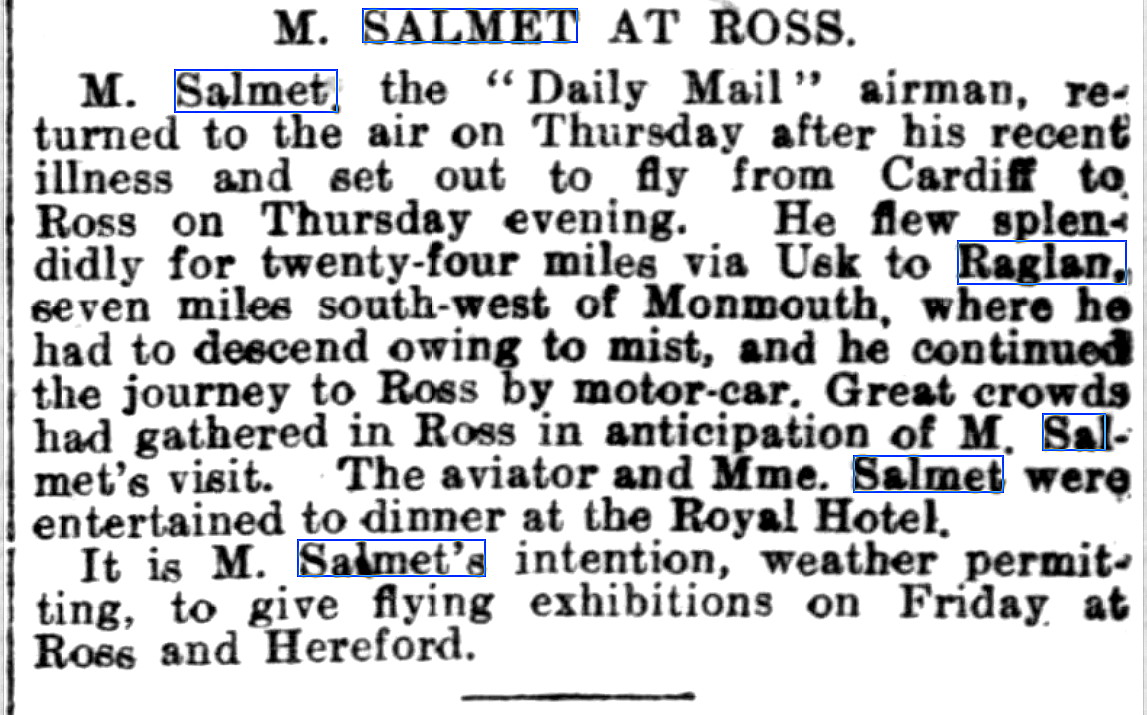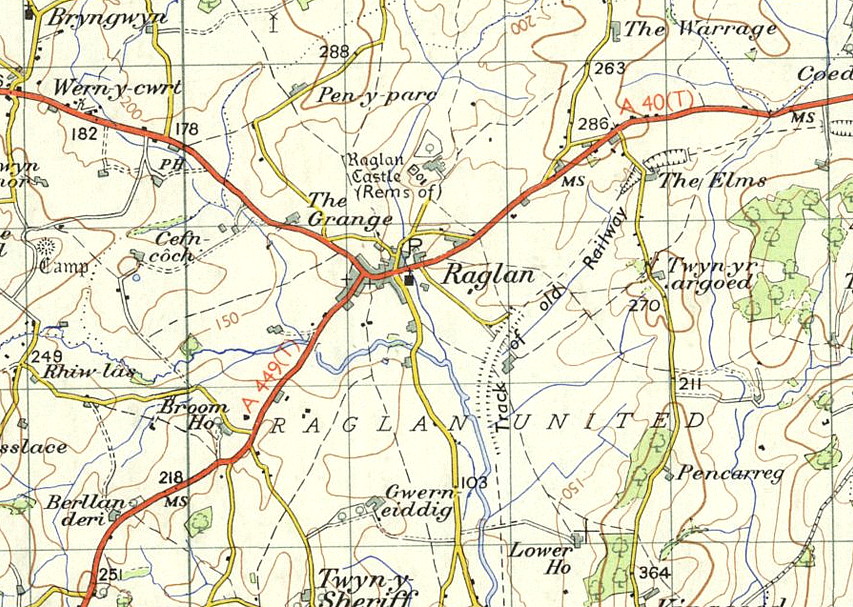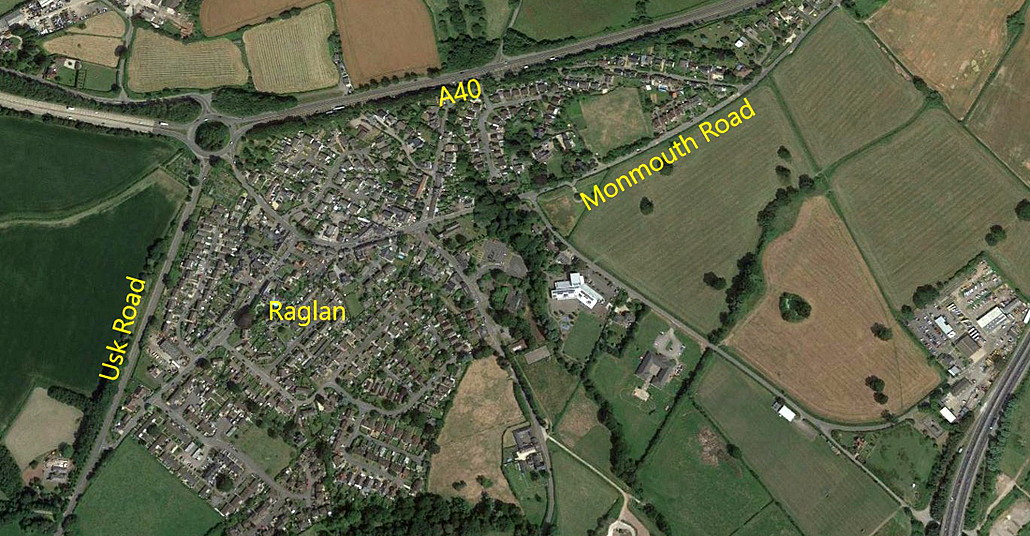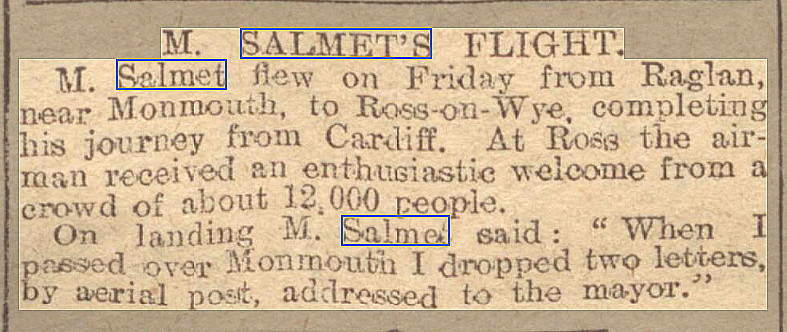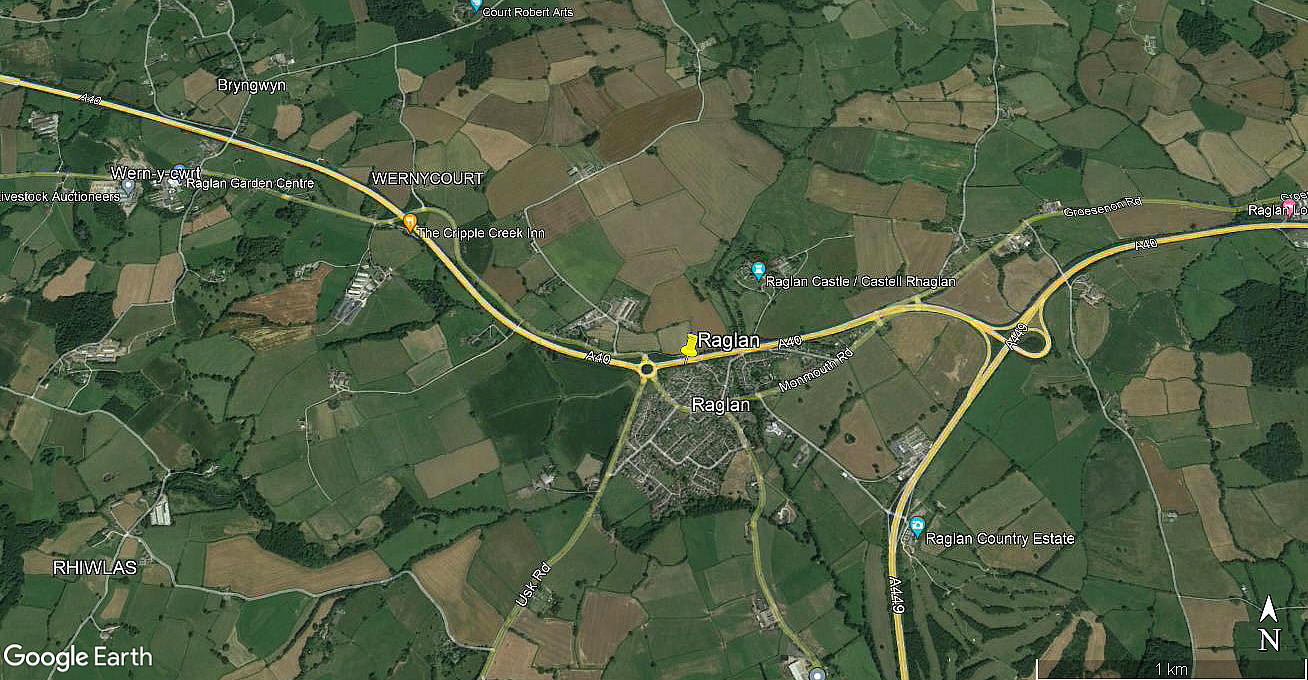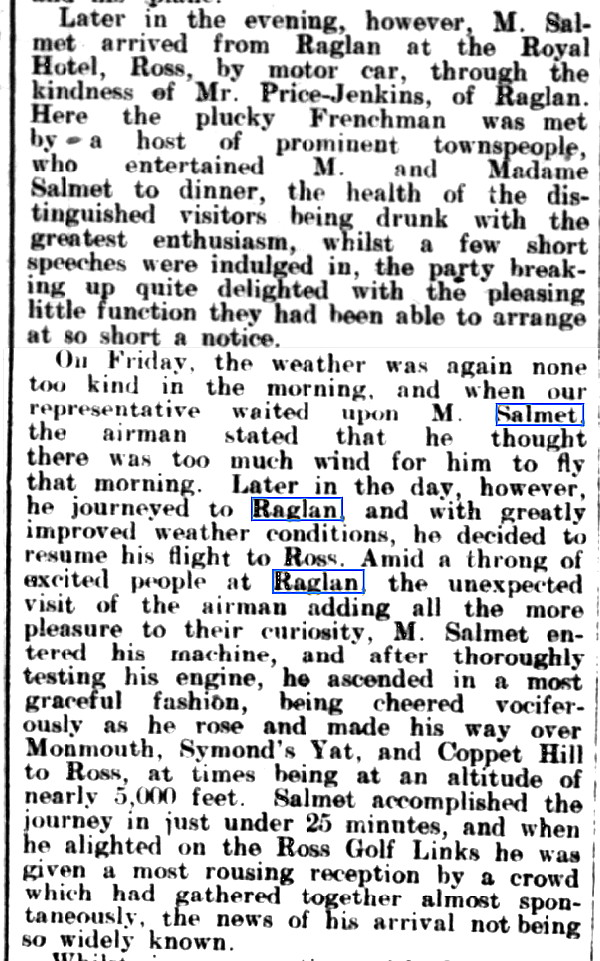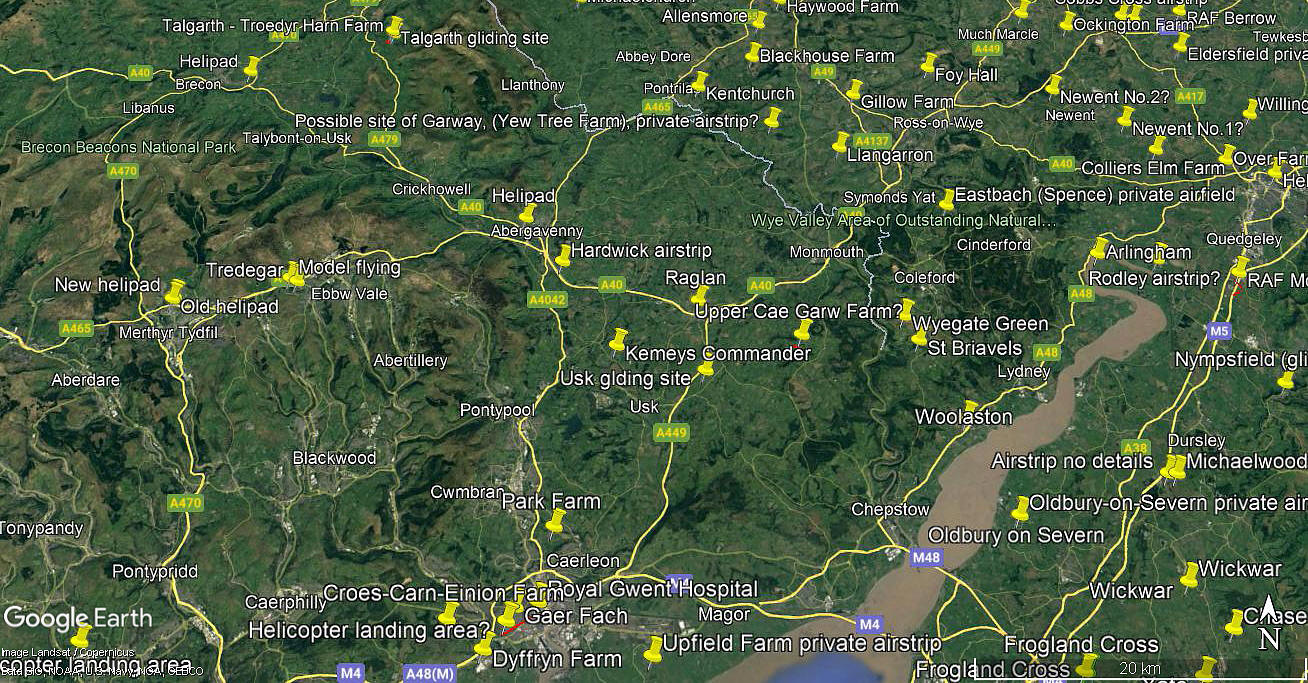Raglan 1912
RAGLAN: Temporary precautionary Landing Ground
Location: Near to Raglan village on the A40, roughly 6nm SW of Monmouth town centre
Period of operation: 18th to 19th July 1912
This location is interesting in several respects, most of which is unknown about. In 1912 the then very famous French aviator Henri Salmet had been sponsored by the Daily Mail to undertake an extensive tour giving 'exhibitions of flying' at as many venues as possible. He certainly achieved this, by and large, and was féted everywhere he went.
But, needless to say, in those days, especially with having to deal with typical weather conditions, especially high winds, his progress did always proceed as planned. In this example it appears that heavy mist, which we would now describe as fog, prevented him from reaching Ross-on-Wye after departing from Cardiff, and he sensibly landed near to Raglan. But, we don't know exactly where.
However, it appears he was soon collected from this temporary Landing Ground, and taken by car to Ross-on-Wye for the night. It never ceases to amaze me how quickly and effectively circumstances like this were arranged in those days. Salmet had Daily Mail agents following him around, plus, he needed his mechanic or mechanics to be on hand to service and fettle his machine. All done by road I imagine, and the roads in those days, even main roads, were little better than those which existed in the previous century - when of course, everything was horse-drawn.
A very important aspect was that the machine, (as aeroplanes were called in the UK at that time), needed to be safely secured overnight. Doubly more so in a location such as this because cattle would eat the fabric. Indeed, even with much more modern machines, when the fabric is usually painted, cattle will still eat it! And that may well incude any lighter and flimsy wooden components.
A MICHAEL T HOLDER GALLERY
Note: The second item was published in the Gloucester Journal on the 20th July 1912.
Note: The fourth item is from Google Earth © and the sixth item was published in the Gloucestershire Echo on the 20th July 1912.
Note: The eighth item was published in the Ross Gazette on the 25th July 1912. The seventh and ninth items are from my Google Earth © derived database.
By this time Salmet was roughly half way through his Tour. Commencing at WORMWOOD SCRUBBS in west London during May, he had made his way westward via several venues as far as LLANELLI in South Wales. He then turned back before crossing the Bristol Channel to then head south-west into the West Country, reaching as far as FALMOUTH. Roughly re-tracing his route, upon arriving back at Cardiff he was taken seriously ill and went back to London where he had serious surgery performed.
Making a remarkable recovery, but probably setting off again far too soon, after little more than three weeks, this diversion was during his first flight after the operation. The original plan being to fly from Cardiff to Ross-on-Wye. Thereafter up towards venues in the southern parts of the West Midlands before heading more or less easterly before visiting venues in Kent and along the south coast.
Mike Holder, a great friend of this 'Guide', has thoroughly researched this Tour, and a full schedule can be found in my article - 'The 1912 tour by Henri Salmet'.
If anybody can kindly offer information as to where exactly Salmet landed, in or near to Raglan, this will be much appreciated.
We'd love to hear from you, so please scroll down to leave a comment!
Leave a comment ...
Copyright (c) UK Airfield Guide















